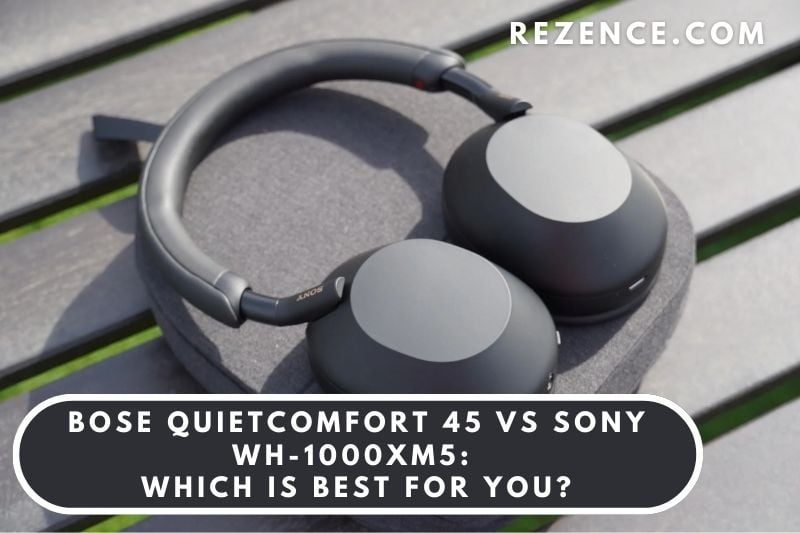Overview
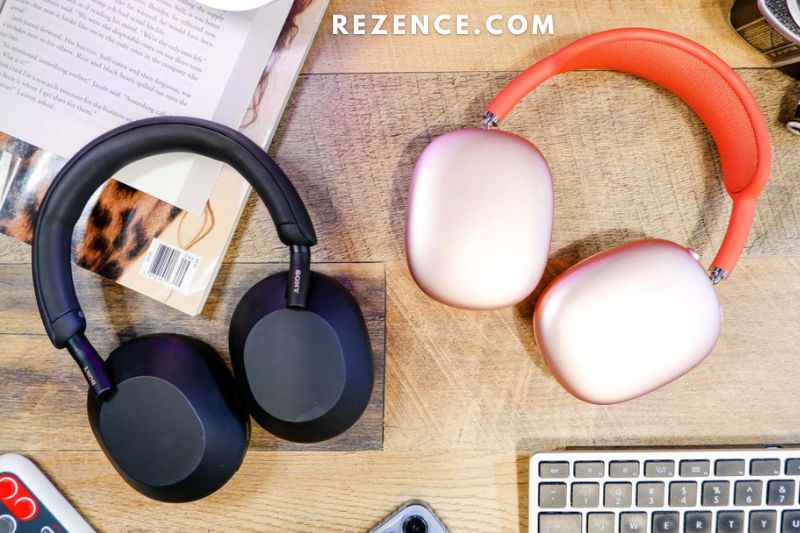
What is Bose QuietComfort 45?
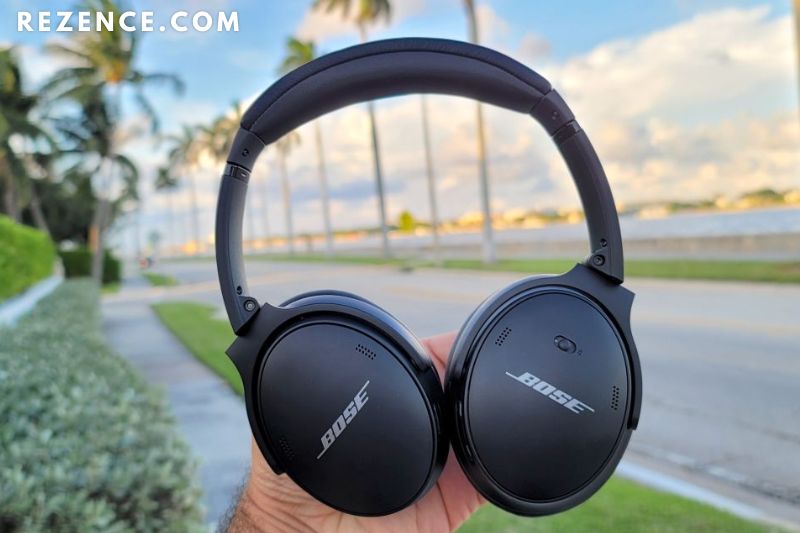
Bose QuietComfort 45 is a noise-canceling headphone designed to provide a more comfortable listening experience. The headphones feature a lightweight design and soft ear cushions for added comfort. Additionally, the headphones feature advanced noise-canceling technology that can reduce up to 99% of background noise.
The Bose QuietComfort 45 also includes a built-in microphone for making phone calls and a carrying case for easy portability.
What is Sony WH-1000XM5?
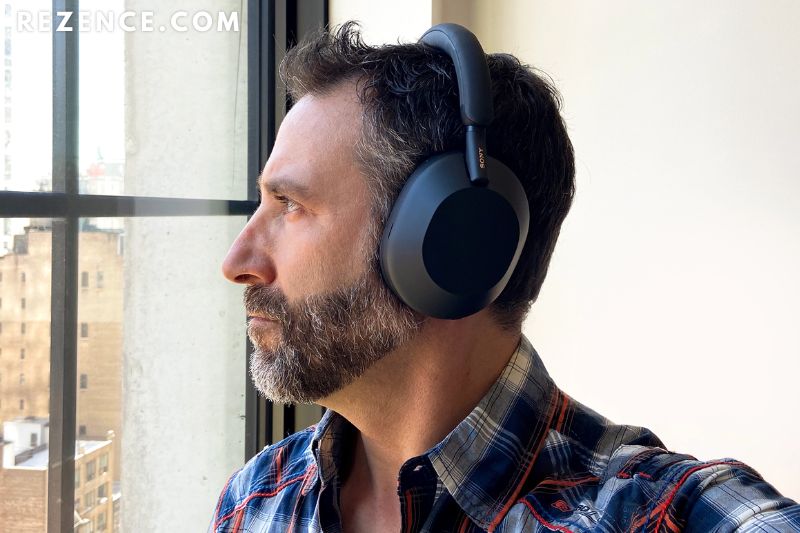
The Sony WH-1000XM5 is a high-end noise-canceling headphone that was released in 2019. It is the successor to the Sony WH-1000XM4 and offers several improvements over its predecessor, including better noise cancellation, longer battery life, and more comfortable ear cups. The Sony WH-1000XM5 is a great choice for anyone looking for high-quality noise-canceling headphones.
Bose QuietComfort 45 vs. Sony WH-1000XM5: Which is Best for you
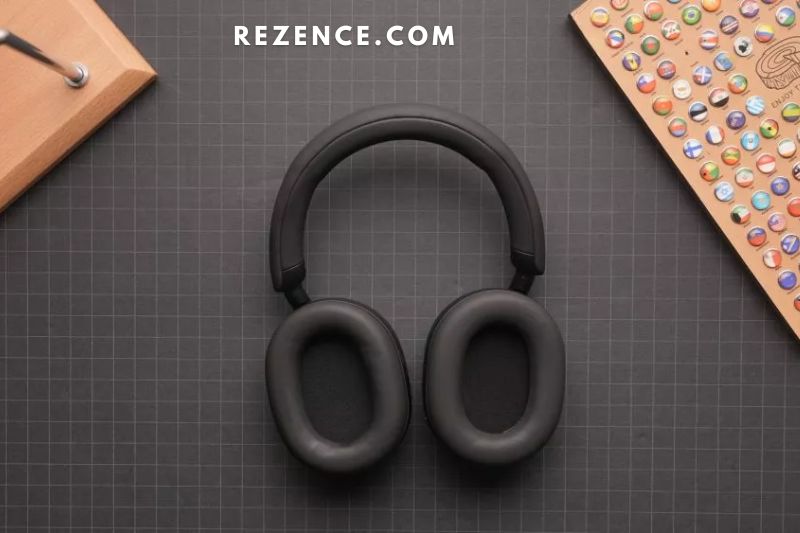
Design

Both headsets are iterative improvements, which means they improve on the appearance and functionality of their predecessors. The QC 45 has more visible branding and buttons, making it less contemporary than the WH-1000XM5.
The QuietComfort 45 has essentially the same tried-and-true design as the QuietComfort 35 II (and the QC35 before it). It’s made of plastic but well-crafted, with impact-resistant glass-filled nylon in the headband and metal reinforcing. The QC 45 has a comfortable fit and weighs 240g, which is about average. The QuietComfort 45 distributes weight efficiently over the headbands thanks to its soft ear cushions.
Surprisingly, the QC 45 lacks a regular listening mode. You must select either noise cancellation or Aware mode, which filters out external sounds through the headphones.
The WH-1000XM5 can be used as a non-noise canceling headset, which is useful if you don’t want to utilize ANC, Ambient mode, or “rapid attention,” which you can activate by cupping your hand over the right ear cup. Because neither headset has an IP classification, you’ll have to limit your use to mild temps or inside.
The weight difference between the WH-1000XM5 and the QC45 is barely visible at 250g. It’s a comfy headset with plenty of space for your ears.
The WH-1000XM5 differs from its predecessor in appearance, with the arms form and absence of folding hinges inspired by Apple. The QC 45 is somewhat more portable than the WH-1000XM5 due to the ability of Bose’s headphone hinges to fold up. However, both businesses include a durable carrying bag for travel to make any headset comfortable and secure.
Noise Cancellation
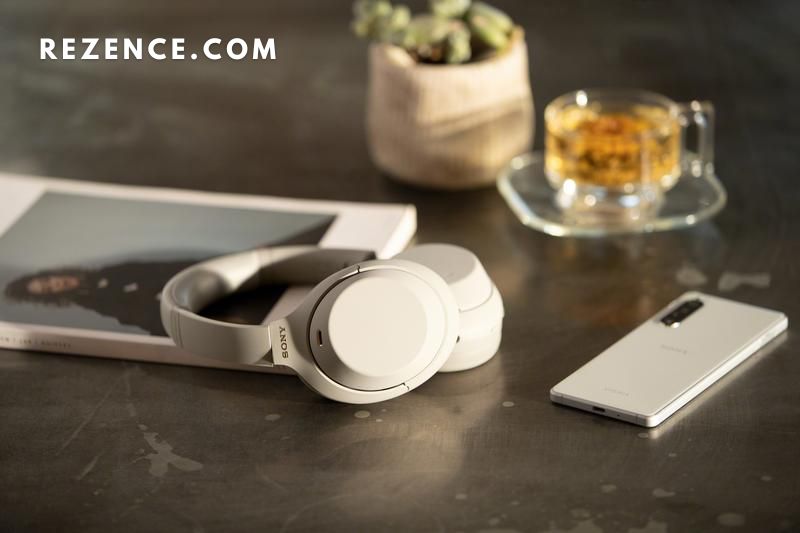
We don’t fly from New York to Los Angeles, spend all day in a packed café, or hide in the corner of a noisy office whenever we assess a set of noise-canceling headphones. We test them on the busy streets of New York, but the main testing takes place indoors in a noise-isolated room, where we put the headphones against demanding sound situations using near-field monitors.
We employ a consistent set of sound files to test noise cancellation performance at low, mid, and high frequencies. Although we are not evaluating the ANC circuitry against the actual rumbling of an aircraft or the noisy bustle of a coffee shop, this technique roughly simulates those settings and allows for consistent testing. Here’s a more detailed breakdown of how we evaluate noise-canceling headphones.
With that in mind, here’s how the two pairs compare when it comes to canceling the various forms of noise we throw at them:
Low-Frequency Noise Cancellation
Most ANC headphones do a good job canceling low-frequency rumbling, but the finest versions go further. The Bose QC45 and the WH-1000XM5 perform admirably in reducing severe low-frequency rumbling. Sony’s headphones let through a tiny band of high-mids that the Bose headphones blacked out, but Sony eventually removed more lows, giving it the edge.
Midrange and High-Frequency Noise Cancellation
The QuietComfort45 headphones outperform the WH-1000XM5 in our high-mid and high-frequency testing because they suppress more of these frequency ranges. Although the effect is minimal, Bose includes a little masking hiss that Sony does not. As a result, Bose provides superior performance in the mids and highs.
Adaptive Noise Cancellation
All active noise cancellation is, by definition, adaptive—noise cancellation circuitry would be ineffective if it didn’t react to changes in audio. When the WH-1000XM5 headphones attempt to adjust to a new audio setting or position of your head, the ANC becomes somewhat less effective for a brief period before returning to its prior performance level.
Thus, one might argue that not hearing this transient adjustment time with the Bose headphones means they provide a more constant (and thus greater) ANC experience; in practice, this isn’t a significant issue.
Transparency Modes
Both headphones’ transparent listening modes (also known as ambient modes) are of good quality, with no noticeable latency concerns. However, the Bose headphones’ Aware Option appears quieter than Sony’s Ambient Sound mode (which isn’t ideal when you want to hear your surroundings). In this setting, the Sony app also allows you to enhance the human voice, giving it a tiny advantage.
Audio Performance
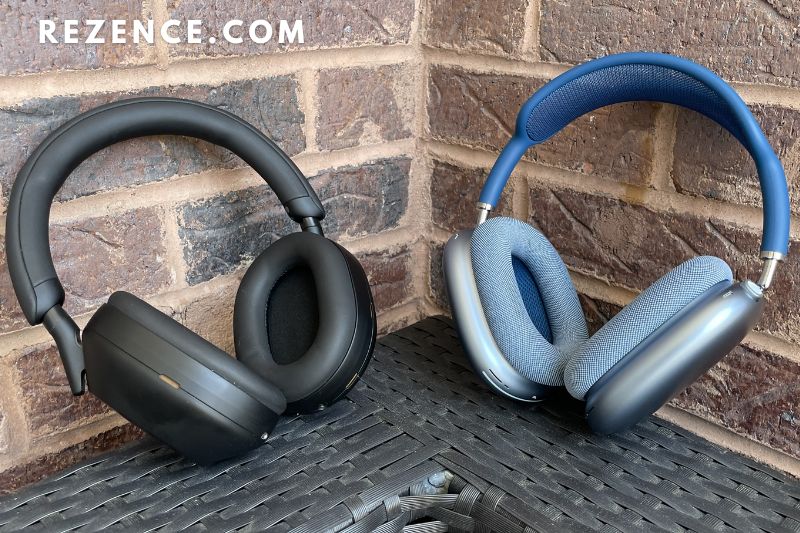
Both the WH-1000XM5 and the QuietComfort45 headphones have appealing sound characteristics right out of the box. The Bose headphones provide bright sounds with plenty of bass depth, while the Sony headphones vs Bose noise canceling produce clean audio with plenty of powerful bottom end. Yet, they bridge the lows and highs with a significantly greater middle presence.
In comparison, the QC45 headphones sound scooped out in the mids. As we’ll see later, both applications include configurable EQs that function well and can substantially change the sound character, though we prefer Sony’s version.
Sony’s headphones have an edge regarding Bluetooth codecs, as they support AAC, LDAC, and SBC. The Bose QC45 headphones only support AAC and SBC.
Battery life
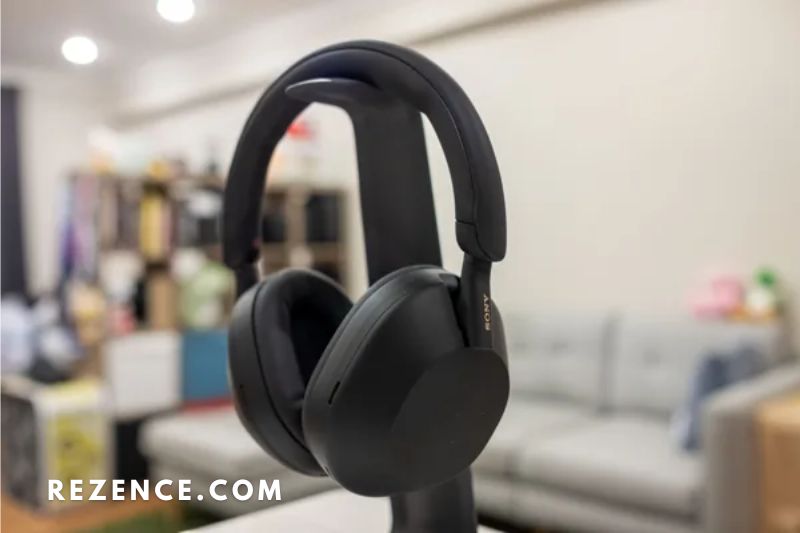
For all of the benefits of noise cancellation, it may be draining on battery life. With noise cancellation turned on, the Sony XM5 lasts an amazing 30 hours. If you turn off the noise cancellation, you may get 40 hours out of them, which is two hours longer than their predecessors, the XM4.
The Sonys also outperform in terms of charging speed. A 10-minute charge provides five hours of usage, while a faster USB PD charger provides three hours after only three minutes of charging. This charger, however, is not included and must be purchased separately.
The Bose 700 cannot compete with such figures. They only get 20 hours of battery life with noise cancellation, which is 10 hours less than the Sonys. This difference might be attributed to Bose’s more sophisticated noise-canceling technology. A 15-minute charge provides three and a half hours of use, which is no match for the XM5.
Sound quality
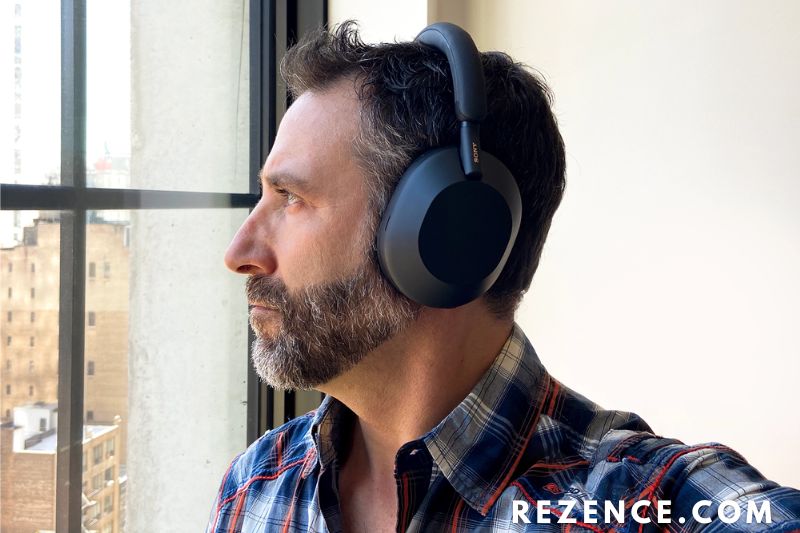
That covers the characteristics. But what about the sound quality of these headphones?
Very nice, as you’d expect from two prominent companies’ premier pairings. The XM5 excels musically, producing a naturally melodic tone. The XM4 was our favorite-sounding headphones at this price, but the XM5 has improved dramatically.
Their sound is more open, with more clarity. Bass notes are portrayed with remarkable accuracy, and the degree of information extracted by these cans is astounding. Dynamic transitions are easily conveyed, and their sense of timing is impeccable.
The 700 has the classic Bose sound: powerful, crisp, and forward. Their audio quality is equivalent to the company’s QC35 II model. While they sound great, it’s evident that Bose spent more time and effort on noise cancellation and design than on sonics.
It has a lively, rapid sound, but the tone isn’t as natural as the Sonys, nor is the bass as deep or textured. While still extremely nice, the WH-1000XM5 is just superior in every way.
Price

These are both excellent headphones with premium costs to match. However, there are some bargains to be had.
The Bose Noise Canceling Headphones 700 were originally priced at £350 / $399 / AU$599 but are now available for £229 / $379 / $445. That’s significant savings for the UK and Australian customers, but not so much for US customers. However, discounts vary frequently, so keep an eye out.
The Sony WH-1000XM5 was priced at £380 / $399 / AU$550 at launch. Because they are newer, bargains are more difficult to come by. But keep an eye on our best headphones offers page since you never know when you’ll strike gold…
Mic Clarity
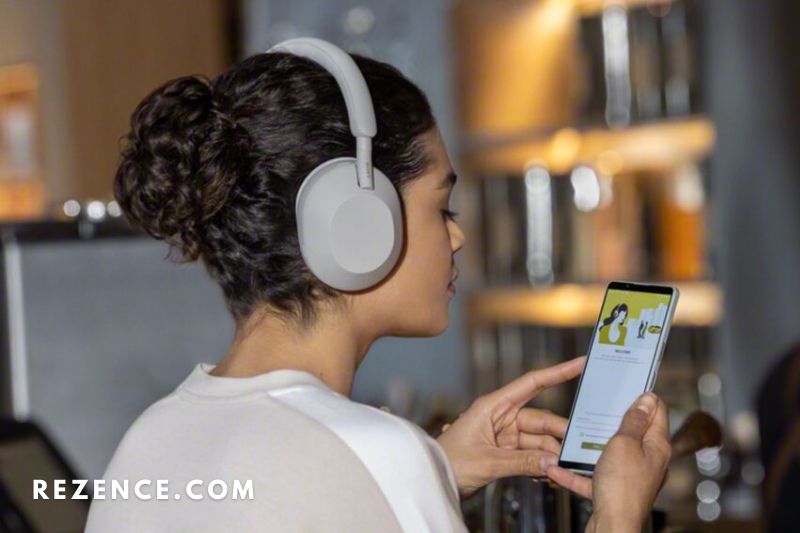
Both headphones provide excellent wireless mic clarity. You should have no problems with call clarity or voice assistance over a stable mobile signal.
The WH-1000XM5’s microphone sounds a bit clearer, and the signal is somewhat louder, while the QC45 headphones allow less background hiss. As a result, a winner in this area is too close to call—these are two of the clearest headphone mic arrays we’ve tested.
Apps and EQ
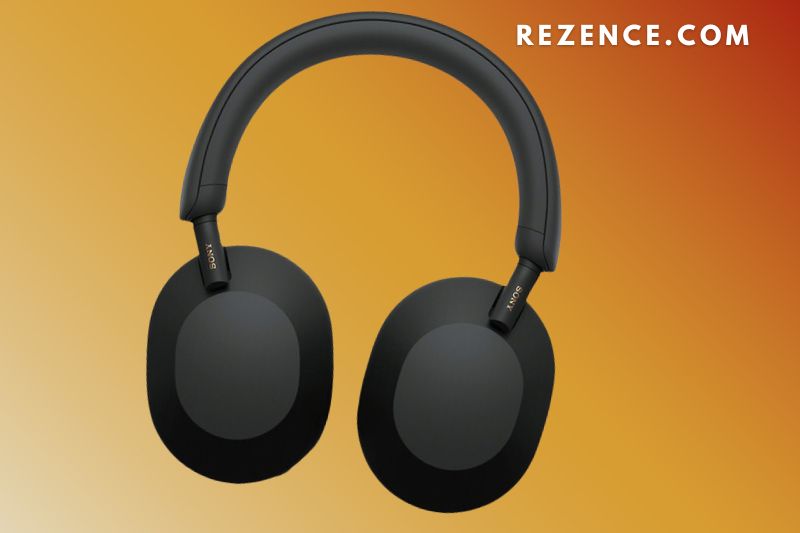
A companion app is unlikely to influence your choice of several hundred-dollar headphones, but they are useful for personalizing the user experience.
The Bose and Sony apps have adjustable EQs, but the Sony app has more adjustment bands (five, plus a bass fader, versus three for Bose). However, Sony’s app includes a slew of needless, borderline unpleasant features, some of which appear to be meant to watch your activity rather than give utility.
Both applications provide varying degrees of control over the ANC and ambient listening experience. Still, Sony’s app has a tiny advantage in this area because it allows you to focus exclusively on voices.
- Read more: Bose QuietComfort 45 vs Sony WH-1000XM4
FAQs
Which is best, Sony or Bose?
If the bass is all you need, with longer battery life and a range of options, the Sony 1000XM3 is the way to go. The QC35 is a wonderful choice if you want good bass and comfort. If you want a phone with moderate bass, touch functions, type C quick charging, and superior Active Noise Cancellation than the QC35, the Bose 700 is the way to go.
Is there anything better than Sony WH-1000XM4?
We discovered that the Bose Noise Canceling Headphones 700 performed better than the Sony WH-1000XM4 in registering swipes and touches.
Is the Sony WH-1000XM4 audiophile quality?
In noisy surroundings, utilizing the XM4 with noise canceling switched on will undoubtedly provide a higher sense of clarity for your music, but this is just because of how well it removes the noise floor. Make no mistake: this is not an audiophile headset in terms of detail and technicality.
Is Sony WH-1000XM5 sweat-resistant?
Official water resistance does not exist. A little sweat should be alright, but I wouldn’t wear them when working out or doing anything sweaty.
Does Sony WH-1000XM5 have NFC?
It was a mistake to abandon previous Mark Series entrants’ elegant and superior craftsmanship. The same may be stated for standard features such as NFC.
Are XM5 worth it?
They also have a much better transparency mode. However, the XM5s are a considerably better bargain based on the retail price and provide stronger noise cancellation. I also enjoy the sound of the Sonys. Stay tuned for much more on Sony’s revolutionary noise-canceling headphones.
Conclusion
There are a few clear distinctions between Bose and Sony headphones. Bose headphones tend to have a more comfortable fit and better noise cancellation capabilities. Sony headphones, on the other hand, often provide crisper sound quality.
Ultimately, your best headphones will depend on your individual needs and preferences. Thanks for reading this article!

